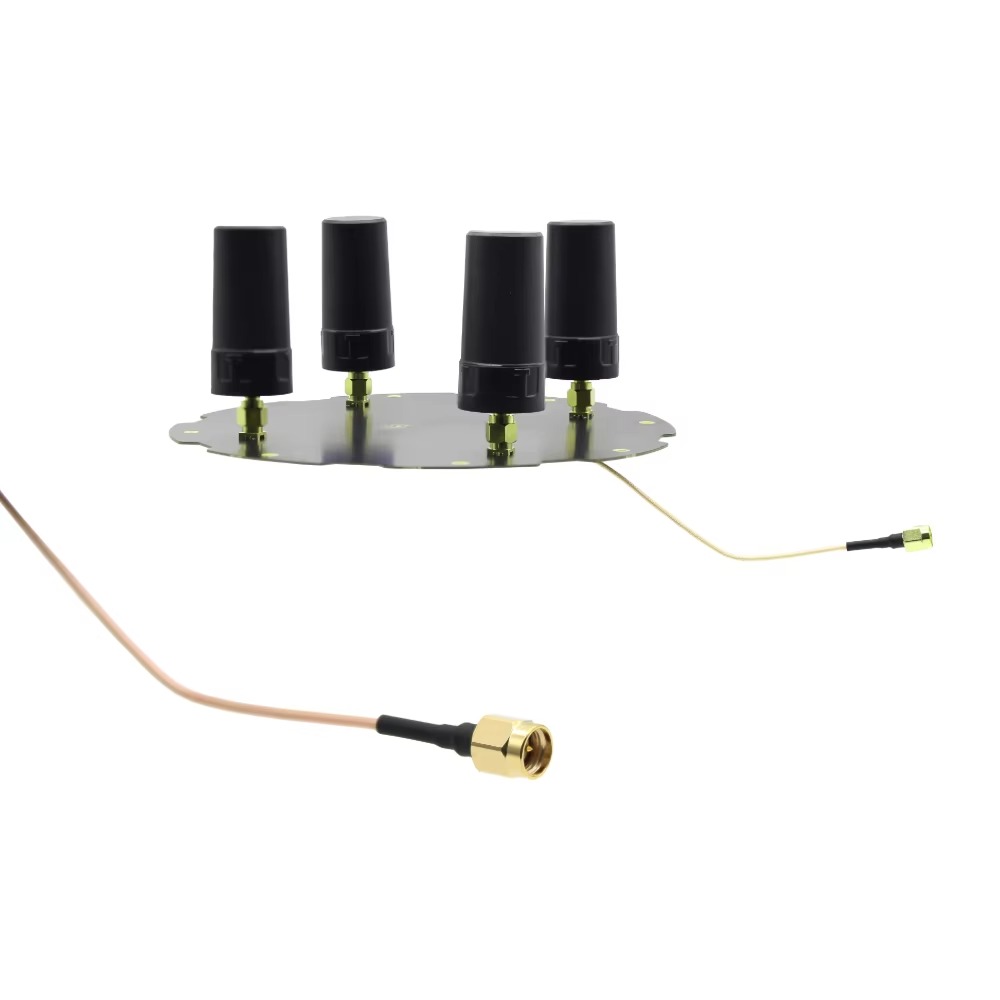The anti-jamming GPS antenna market has witnessed exponential growth, driven by escalating geopolitical tensions and the critical need for resilient PNT solutions. According to industry reports, the global anti-jamming GPS market is projected to reach USD 7.5 billion by 2032, growing at a 9.89% CAGR from 2024 to 2032. Phased array antennas, a subset of this market, are expected to rise from USD 0.8 billion in 2023 to USD 1.8 billion by 2032, underscoring their pivotal role in enhancing GPS robustness against jamming.
Core Components and Architecture
High-performance anti-jamming GPS antennas are built around CRPA technology, which employs multiple antenna elements arranged in a geometric configuration (e.g., linear, circular, or planar arrays). Each element is connected to a DSP unit that dynamically adjusts the phase and amplitude of incoming signals, enabling the antenna to form a directional beam toward GPS satellites while generating nulls (areas of minimal sensitivity) in the direction of jammers.
For instance, TUALCOM’s CRPA-based products offer 2, 4, 8, and 16-element antenna solutions, catering to platforms of varying sizes, from handheld devices to military aircraft. Similarly, Mayflower Communications’ NavGuard® 700 (MAGNA-F) features a 7-channel CRPA with simultaneous L1/L2 band support, meeting stringent FAA TSO C-190 standards for commercial aviation.
Material Innovations and Miniaturization
A key challenge in antenna design is balancing performance with size, weight, and power (SWaP) constraints, particularly for wearable or man-portable systems. Researchers have explored novel materials such as graphene-patterned flexible substrates and high-dielectric-constant polymers to reduce antenna size without compromising gain or bandwidth. For example, DTIC studies demonstrate a 5× weight reduction in wearable antennas while maintaining a magnetic loss tangent < 0.1 up to 500 MHz, critical for L1/L2 band operation.
Null-Steering Algorithms
The effectiveness of CRPA antennas hinges on null-steering algorithms, which calculate the optimal phase shifts for each element to suppress interference. These algorithms leverage adaptive filtering and machine learning to continuously update the antenna’s radiation pattern in real time, even in dynamic environments with multiple jammers. NovAtel’s GAJT product line, for instance, uses dual linear polarization null-steering to enhance anti-jam performance without increasing physical size or power consumption.
Signal Processing Pipeline
Signal Reception: The antenna array captures GPS signals (e.g., L1 at 1575.42 MHz) and jamming noise across its elements.
Beamforming: DSP units apply phase shifts to each element’s signal, creating a constructive interference pattern toward satellites and destructive interference (nulls) toward jammers.
Null Steering: Advanced algorithms dynamically reposition nulls as jammers move or new threats emerge, ensuring sustained signal integrity.
Signal Filtering: Post-beamforming, the aggregated signal passes through narrowband filters to isolate GPS frequencies from broadband noise.
-
Advantages
Multi-Jammer Mitigation: CRPA antennas can nullify multiple jammers across GNSS constellations (GPS, GLONASS, Galileo, BeiDou).
High Gain and Directivity: Beamforming enhances signal-to-noise ratio (SNR), improving positioning accuracy in urban canyons or dense foliage.
Adaptability: Real-time algorithm updates enable operation in dynamic environments, such as military convoys or aerial combat.
SWaP Efficiency: Modern designs (e.g., Mayflower’s NavGuard® 420 HI-GAINS) achieve high performance in compact form factors, suitable for UAVs or dismounted soldiers.
Challenges
Phase Center Stability: Variations in the antenna’s phase center can degrade PNT accuracy, particularly in high-precision applications like aircraft landing systems.
Power Consumption: DSP-intensive null-steering algorithms demand significant power, limiting battery life in portable systems.
Material Limitations: Flexible substrates may suffer from magnetic losses at high frequencies, restricting bandwidth and gain.
Cost: CRPA antennas remain expensive due to complex manufacturing processes and DSP hardware, hindering widespread civilian adoption.
-
Current Applications
Military: Anti-jamming antennas are standard on fighter jets (e.g., F-35), naval vessels, and ground vehicles to ensure secure PNT in contested environments.
Aerospace: Commercial aircraft use FAA-certified systems like Mayflower’s MAGNA-I for ADS-B compliance and anti-spoofing.
Maritime: Ships rely on CRPA antennas for navigation in GPS-denied waters near conflict zones.
Wearables: Soldiers and first responders use compact antennas (e.g., DTIC’s textile-integrated designs) for dismounted operations.
Future Trends
Software-Defined Radios (SDR): Integrating SDRs with CRPA antennas will enable reconfigurable anti-jamming solutions tailored to specific threats.
AI-Driven Null Steering: Machine learning models will predict jammer locations and preemptively adjust antenna patterns, reducing latency.
Quantum Sensing: Quantum-enhanced GPS receivers could complement CRPA antennas by detecting jamming signals at the quantum level.
5G Integration: Hybrid GNSS-5G systems will leverage cellular networks for backup PNT during GPS outages, with anti-jamming antennas ensuring seamless handovers.
Conclusion
High-performance anti-jamming GPS navigation antennas represent a critical enabler for secure PNT in an increasingly contested electromagnetic spectrum. By combining CRPA technology, advanced materials, and adaptive algorithms, these systems mitigate a wide range of interference threats while addressing SWaP and cost constraints. As geopolitical tensions persist and GNSS dependencies grow, innovations in AI, quantum sensing, and 5G integration will further elevate anti-jamming capabilities, ensuring GPS remains a reliable cornerstone of global infrastructure. The market’s rapid expansion—from USD 0.8 billion in 2023 to USD 7.5 billion by 2032—reflects the urgent demand for resilient navigation solutions, positioning anti-jamming antennas as a transformative force in both military and civilian domains.




































































 Language
Language
 En
En Cn
Cn Korean
Korean

 Home >
Home > 





 18665803017 (Macro)
18665803017 (Macro)













